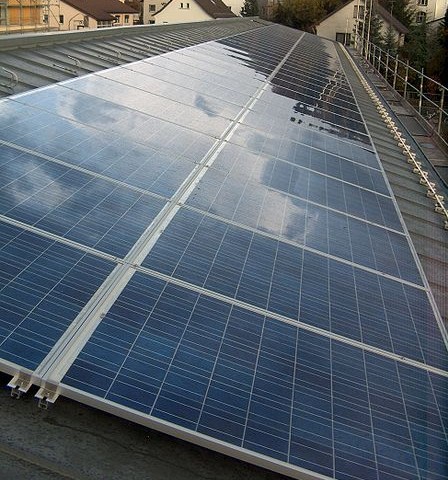Your basket is currently empty!

Off-grid vs On-grid – Solar Panel example
Going off-grid may seem exciting and for many people it’s part of a vision of being self-reliance. For many going completely off grid can be expensive — it’s actually much easier and cheaper to use the ‘grid’ as your battery. You get paid when you produce more than you can use right now, and you pay the grid when you don’t have enough. This generally works out better because storing the energy for yourself in a battery will typically lose around 30% of the energy.
Here’s a quick example of how important that factor can be.
Let’s say your family has cut down on their electricity usage and pushed it all the way down to 500kWhr per month. If you are on-grid, you only need to produce around 500kWhr per month to end up with a ZERO bill (if you get a ‘net metering’ agreement in place). This needs around 14 square meters of solar panel. We work this out, roughly, as follows:

- In the cities of South Africa (Joburg, Cape Town, Durban) we receive an average of around 5.5kWh of energy from the sun on each square meter of area per day (it varies between 3.5 and 8 in Cape Town, but in Joburg the range is 5 to 6.4)
- Solar cells (Photovoltaics) can only convert at maximum 25% of the energy that hits them
- So, a solar cell will produce 1.375kWh per square meter per day – or around 41kWh per month
- We lose another 10% or so converting the electricity to mains electricity so 41 * 90% = 37 kWhr per month per square meter
- So – I need 500 kWhr per month, and I get 37 kWhr per square meter – so I need to buy 13.5m square meters of panels (500/37 = 13.5)
If you’re off grid however you have two options:
- Match your energy generation to your use — this might be possible with fuel-based systems (fuel cells, generator etc.), but pretty much impossible with solar and wind; e.g. you need to turn on a light when it’s dark… so electricity for lights will never match solar power. (unless you have a very clever Homebug that is?!)
- Store your energy for later – using a standard battery, this means losing around 30% of the energy you produce
If you’re using solar panels, you will likely use around 70% of your electricity when it’s dark (i.e. lights, heating, cooking etc.) and so you have to store that sun energy for the night-time. So you end up needing:
- 30% of energy you use right away
- 70% of energy you need double the amount = 70% / 70% = 100%
- 100% + 30% = 130%
- 130% times 13.5 square meters = 17.5 square meters
If you go off grid therefore, you need to buy 30% more solar panels, as well as the battery (and equipment controlling the battery) to make sure you have electricity when the sun doesn’t shine. Furthermore the ‘seasonality’ of sunlight we get in Cape Town would mean you’d need almost DOUBLE the number of panels to cover your usage in Winter. 5.5kWhr average over the year, but only 3.5kWh in January – so 5.5/3.5 = 1.83 –> i.e. 83% more panels needed in January.
There’s good discussion around the web about which batteries to use and how much it costs, and prices and technology change all the time.
One company that keeps a good public record of its successes is Ex Solar:
http://www.exsolar.co.za/blog/
Comments
One response to “Off-grid vs On-grid – Solar Panel example”
Good day. This is the first time I have seen your website and find it very interesting. I have allways wondered what the cost and ROI would be in using a combination of gas and solar. IE solar for daytime use and battery backup for lights only for night time or use the grid..Gas for all heating or a combination of solar for most water heating during the day and fairly large storage and the rest of weter heating being gas mostly for night. Have you looked into this? and if so can you direct me to the article Many thanks.

Leave a Reply